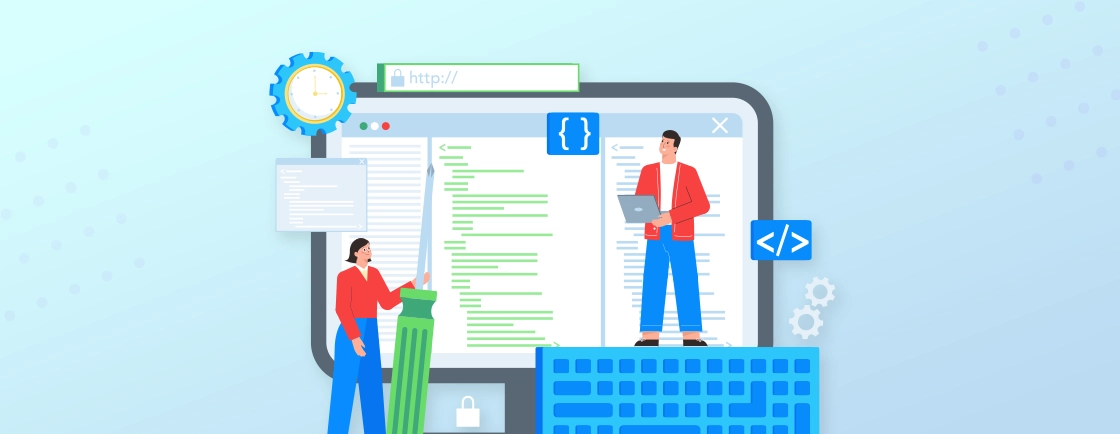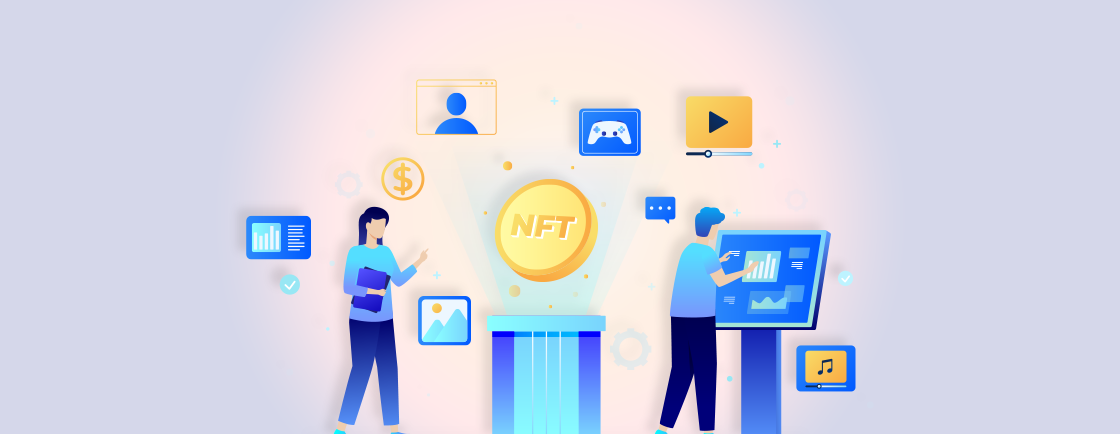Table of Contents
Many a time, organizations find off-the-shelf Learning Management System (LMS) fall short with generic features that don’t align with the particular training needs. This mismatch leads to disengaged learners, inefficient training programs, and ultimately, a lower return on investment in terms of employee development.
So through this blog, I’ll explain how you can go one and build LMS from scratch and the best practices adopted by the professional LMS development services. Let’s begin with the requirements.
Defining the Requirements for a Custom LMS
Before going ahead with the LMS development, first, you have to define the requirements. This planning phase ensures that the final product effectively addresses your learning management objectives and aligns with your organizational goals.
A well-defined set of requirements serves as a blueprint for the entire development process, so there’s no costly rework and the project is successful. Here are the key aspects.
Target Audience Analysis
Identifying your target audience is the first step. Consider the following:
- Learner Demographics: Age, technical proficiency, learning styles, and accessibility needs.
- Number of Users: Estimate the current and projected number of users to inform scalability requirements.
- Roles and Permissions: Define different user roles (e.g., administrators, instructors, learners) and their associated permissions within the LMS.
Learning Objectives and Content Types
Clearly define the learning objectives that the LMS should help achieve. This will guide the selection of appropriate features and functionalities. Consider the types of content you will be delivering:
- Course Formats: Online courses, blended learning programs, microlearning modules, video tutorials, interactive simulations, etc.
- Content Delivery Methods: Synchronous (live webinars) or asynchronous (self-paced modules).
- Assessment Methods: Quizzes, assignments, exams, peer reviews, progress tracking.
Essential Features and Functionalities
Based on your target audience and learning objectives, identify the core features your LMS must possess:
- Course Management: Tools for creating, organizing, and managing courses, including content uploading, curriculum sequencing, and course scheduling.
- User Management: Functionality for user registration, profile management, enrollment, and group management.
- Assessment and Grading: Features for creating and administering quizzes, assignments, and exams, as well as automated grading and feedback mechanisms.
- Reporting and Analytics: Tools for tracking learner progress, generating reports on course completion rates, assessment scores, and other key metrics.
- Communication and Collaboration: Features for facilitating communication between learners and instructors, such as discussion forums, messaging systems, and virtual classrooms.
- Mobile Compatibility: Ensure the LMS is accessible and functional on various mobile devices.
- Gamification (Optional): Consider incorporating game mechanics (e.g., badges, points, leaderboards) to enhance learner engagement.
Integrations with Existing Systems
Determine if the LMS needs to integrate with other business systems:
- HR Information Systems (HRIS): For user provisioning and employee data synchronization.
- Customer Relationship Management (CRM) Systems: For tracking customer training and engagement.
- Payment Gateways: For selling online courses or managing subscriptions.
- Single Sign-On (SSO): For seamless user authentication across different platforms.
Scalability and Performance Requirements
Consider the current and future needs of your organization regarding:
- User Growth: Ensure the LMS can handle increasing numbers of users without performance degradation.
- Data Storage: Plan for sufficient storage capacity for learning content and user data.
- Bandwidth Requirements: Ensure adequate bandwidth for smooth content delivery, especially for multimedia content.
This thorough planning will save time and resources during the development process and ensure the final product delivers the desired results.
How to Build LMS from Scratch?
After you have taken care of all requirements, it’s time to dive into the LMS development process. Building the LMS entirely from scratch involves writing the code and designing the architecture to meet your precise specifications.
This approach offers the highest degree of flexibility and control, so you can tailor every aspect of the platform to your unique requirements.
Let’s look at the key aspects of custom LMS development
Choose the Right Hosting Infrastructure
The hosting infrastructure plays a vital role in the performance, reliability, and security of your LMS. Two primary hosting options exist:
- Cloud Hosting: Utilizing cloud providers like AWS, Google Cloud, or Azure offers scalability, flexibility, and reduced maintenance overhead. Cloud hosting allows you to easily scale resources up or down based on demand, minimizing infrastructure management responsibilities.
- On-Premise Hosting: Hosting the LMS on your own servers provides greater control over the infrastructure but requires significant investment in hardware, software, and IT staff. This option is generally suitable for organizations with strict data security or compliance requirements.
Implement the Security Best Practices
Security is paramount when dealing with user data and learning content. Implementing robust security measures is crucial to prevent unauthorized access, data breaches, and other security threats. Key security considerations include:
- Data Encryption: Encrypting data both in transit (using HTTPS) and at rest (using database encryption) to protect sensitive information.
- Access Control: Implementing role-based access control to restrict user access to specific functionalities and data based on their roles.
- Vulnerability Testing: Regularly conducting security audits and penetration testing to identify and address potential vulnerabilities.
- Regular Security Updates: Keeping the LMS software, operating systems, and other components up to date with the latest security patches.
- Compliance Standards: Adhering to relevant security standards and regulations (e.g., GDPR, HIPAA) depending on the nature of the data being handled.
Implement the Performance and Scalability Practices
As your user base and content library grow, the LMS must be able to handle increasing traffic and data volumes without performance degradation. Key scalability and performance considerations include:
- Database Optimization: Designing an efficient database schema and optimizing database queries to ensure fast data retrieval and processing.
- Caching Mechanisms: Implementing caching strategies to reduce database load and improve response times.
- Load Balancing: Distributing traffic across multiple servers to prevent overload and ensure high availability.
- Content Delivery Network (CDN): Use a CDN to cache and deliver static content (e.g., images, videos) from geographically distributed servers. It will improve loading times for your employees accessing training programs worldwide.
Connect With the Existing Systems
Integrating the LMS with other business systems can streamline workflows and enhance data sharing. Key integration considerations include:
- API Design and Documentation: If building a custom LMS, designing well-documented APIs is essential for facilitating integrations with other applications.
- Data Mapping and Transformation: Defining how data will be exchanged between the LMS and other systems and ensuring data consistency.
- Integration Testing: Thoroughly testing integrations to ensure they function correctly and do not introduce errors or security vulnerabilities.
Take Care of the UI/UX for Usability
A user-friendly interface is crucial for learner engagement and adoption. Key UX/UI considerations include:
- Intuitive Navigation: Designing clear and intuitive navigation to help users easily find the information they need.
- Responsive Design: Ensuring the LMS is accessible and functional on various devices (desktops, laptops, tablets, and smartphones).
- Accessibility: Adhering to accessibility guidelines (e.g., WCAG) to ensure the LMS is usable by people with disabilities.
- User Testing: Conducting user testing to gather feedback and identify areas for improvement in the user interface.
By carefully addressing these technical considerations, you can ensure your LMS is robust, secure, scalable, and provides a positive user experience. This will contribute to higher adoption rates, improved learning outcomes, and a greater return on investment.
Testing & Deployment
After meticulously planning, building, and securing your LMS, the testing and deployment phase is all about bringing your vision to life. Rigorous testing is crucial.
Start with unit tests to verify individual components, followed by integration tests to ensure smooth interaction between modules. Then, system testing assesses the LMS as a whole, while user acceptance testing (UAT) involves target users providing feedback on usability and functionality.
This iterative process identifies and resolves bugs and usability issues before launch.
Once the testing is complete, go ahead with the deployment. That involves setting up the LMS on your chosen hosting infrastructure, configuring necessary settings, and migrating any existing data. But it doesn’t end there.
Post-deployment, continuous monitoring and maintenance are essential to ensure optimal performance, security, and user satisfaction.
If you need help with the whole process, have a consultation with our dedicated LMS development company. We will help implement every step of the process to the tee and ensure the best results. For that, we adopt two key project management methodologies, according to your LMS requirements.
Key Project Management Methodologies for LMS Development
Choosing an appropriate project management methodology is crucial for keeping the LMS development on track, within budget, and meeting deadlines. So we use these two popular methodologies:
Waterfall
This is a traditional, linear approach. Each phase (requirements, design, development, testing, deployment) is completed sequentially. You move to the next phase only after the previous one is finished.
Pros for LMS development
- Clear structure and documentation: Useful for projects with well-defined requirements from the start.
- Easy to understand and manage: Simpler for teams less experienced with Agile.
Cons for LMS development
- Lack of flexibility: Difficult to accommodate changes in requirements once a phase is complete. This can be a problem in LMS development where needs might evolve.
- Longer time to delivery: Since each phase must be fully completed before moving on, it can take longer to get a working product.
Waterfall is well-suited for projects with evolving requirements or where flexibility is paramount.
Agile
This iterative approach emphasizes flexibility, collaboration, and continuous feedback. The project is broken down into smaller sprints or iterations, so there’s room for adjustments and changes throughout the development process.
Pros for LMS development
- Flexibility and adaptability: Changes can be easily incorporated throughout the development process. This is great for LMS projects where user feedback and evolving needs are important.
- Faster time to market: Working increments are delivered frequently, allowing for quicker testing and deployment of core features.
- Increased collaboration: Agile emphasizes collaboration between the development team and stakeholders.
Cons for LMS development
- Requires strong communication and collaboration: Teams need to be comfortable with frequent interaction and feedback.
- Can be challenging to estimate overall project timeline and cost: Due to the iterative nature, it can be harder to predict the final completion date and budget at the outset.
Which is Better for LMS Development from Scratch? Waterfall or Agile?
In most cases, Agile is generally better suited for LMS development. The iterative nature of Agile allows for greater flexibility to accommodate changes in requirements, user feedback, and emerging technologies, which are common in the evolving world of online learning.
But the Waterfall approach would also work in case of very small, well-defined LMS projects. It would be better if the project had minimal anticipated changes and a clear understanding of all requirements from the beginning.
How Much Does It Cost to Build LMS from Scratch?
The hosting infrastructure plays a vital role in the performance, reliability, and security of your LMS. When choosing between Cloud vs Self-Hosted LMS, it’s important to evaluate scalability, cost, and control.
- Complexity of Features: Basic features like user management, course uploads, and simple assessments will cost less than advanced functionalities like gamification, social learning, or integrations with external systems.
- Design and User Experience (UX): A simple, functional design will be less expensive than a highly customized, visually appealing interface with advanced UX elements.
- Technology Stack: The choice of programming languages, frameworks, and databases can influence development time and costs.
- Hosting and Infrastructure: Hosting costs will depend on factors like server capacity, storage, and bandwidth.
- Testing and Quality Assurance: Thorough testing is essential to ensure a stable and reliable LMS, but it also adds to the overall cost.
- Maintenance and Support: Ongoing maintenance, updates, and technical support will incur additional expenses.
If you want an accurate estimate, create a detailed list of features, functionalities, and design preferences. Then our LMS development agency will provide you with a detailed estimate of the cost and duration.
Let’s Summarize
Building an LMS from scratch is a significant undertaking, but the rewards—a perfectly tailored learning environment—can be substantial. You need to be meticulous with the planning, defining your specific needs, target audience, and desired functionalities.
Choosing the right technology stack, prioritizing UI/UX for usability, and implementing robust security and performance practices are crucial steps in the development process.
If you need help with implementing these processes and creating the best LMS, have a consultation with us today!
FAQs on Building LMS from Scratch
Why should I build LMS from scratch instead of buying an off-the-shelf solution?
Building a custom LMS offers greater flexibility, customization, and control. It allows you to tailor the platform to your specific needs, integrate seamlessly with existing systems, and create a unique learning experience.
How long does it take to build an LMS from scratch?
The development timeline varies depending on the complexity of the project. A basic LMS might take a few months, while a more complex one could take a year or more.
Are there any common mistakes to avoid when building an LMS from scratch?
Common mistakes include inadequate planning, neglecting user feedback, overlooking security considerations, and underestimating the importance of testing.
Explore Our Expert Guides
Dive into detailed tutorials, tips, and strategies designed to help you grow, innovate, and solve problems efficiently.





